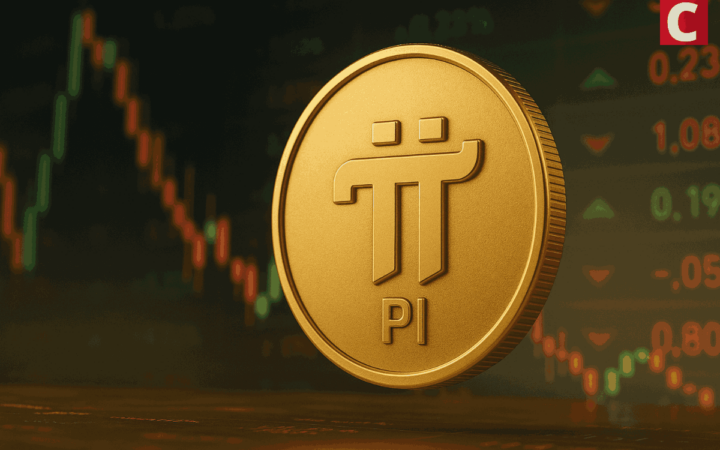Nine European banks established a consortium to develop a euro-denominated stablecoin scheduled for launch in 2026.
According to a Bloomberg news report, on Sept.25, the initiative represented Europe’s most coordinated response to the dollar-dominated digital payment landscape.
The banking alliance included UniCredit SpA, ING Groep NV, DekaBank, Banca Sella, KBC Group NV, Danske Bank AS, SEB AB, CaixaBank SA, and Raiffeisen Bank International AG.
The consortium created a new Netherlands-based company to house the project and issue the token, according to DekaBank’s statement.
Floris Lugt, ING’s digital assets lead and joint public representative of the initiative, stated:
Lugt emphasized the potential of stablecoins to accelerate cross-border payments and facilitate the settlement of tokenized asset transactions.
Banking Consortium Targets Strategic Payment Independence
The banks aimed to “create a European alternative to the stablecoin markets dominated by the US so far, thus contributing to Europe’s strategic autonomy in payments,” the statement said.
The consortium remained open to additional bank participation in the initiative.
European financial institutions have begun to embrace digital assets months after the European Union’s comprehensive crypto regulatory framework, the MiCA, took full effect.
Banco Santander SA reportedly considered entering the space while a Deutsche Bank AG’s DWS Group-backed company issued a euro-denominated stablecoin in the summer of 2024.
Bloomberg Intelligence analyst Diksha Gera estimated stablecoins could facilitate more than $50 trillion in annual payments by 2030.
The projection suggested that fiat-pegged tokens capture 25% of consumer transactions, compared to the current rate of less than 1%.
Euro Push for Stablecoin to Defy Dollar Dominance
The stablecoin market remained heavily concentrated in dollar-denominated tokens.
Tether’s USDT commanded a market capitalization of $173 billion, while Circle’s USDC held a market capitalization of $74 billion as of press time.
Tether’s dominance generated substantial profits through the yield earned on Treasury securities backing its token.
The US has recently implemented its first stablecoin regulations, the GENIUS Act. It is expected to accelerate the adoption of dollar-denominated tokens.
PayPal, Robinhood, and the President Donald Trump-backed World Liberty Financial explored or issued their own stablecoins amid the regulatory clarity.
Stablecoin News: ECB Officials Champion Digital Euro Development
While banks explore a euro-backed stablecoin, the European Central Bank (ECB) is championing the launch of a digital euro.
Governing Council member Joachim Nagel advocated for a digital euro on Sept. 22, calling it “an important milestone for the savings and investment union and a sensible response to stablecoins.”
Nagel argued the digital euro would enhance Europe’s payment system independence.
Bank of France chief Francois Villeroy de Galhau warned on Sept. 25 that European banks risked falling behind US stablecoin development.
He projected that the stablecoin market could reach trillions of dollars, up from the current $250 billion. That would force European banks to address private tokenized currency needs.
Villeroy said:
He described the debate as “essential for the future of European sovereignty.”
ECB Executive Board member Piero Cipollone identified 2029 as a potential launch date for the digital euro during a Sept. 25 event with Bloomberg.
Cipollone highlighted recent progress on customer holding limits among euro-area finance ministers. He also expressed optimism that parliamentary approval would be achieved by May 2026.
European Banks Counter Dollar Payment System Reliance
The banking consortium’s formation coincided with intensified ECB efforts to reduce European dependence on US payment processors, such as Visa and PayPal.
The dual approach of private stablecoin development and public digital euro creation reflected Europe’s strategy to challenge the dominance of the dollar payment system.
Stablecoins provide programmable payment capabilities that extend beyond traditional banking systems.
Lugt described automated supply chain payments, where funds are transferred automatically to manufacturers upon confirmation of supplier delivery, demonstrating the operational advantages of blockchain technology.
The European initiative faces significant competition from established dollar-pegged stablecoins, despite its regulatory advantages.
New entrants historically struggled against Tether and Circle’s market positions, with most stablecoin usage concentrated in crypto trading rather than mainstream business payments.
The nine-bank consortium represented Europe’s most ambitious private sector response to the advancement of dollar stablecoins.
Source: https://www.thecoinrepublic.com/2025/09/25/nine-european-banks-launch-euro-stablecoin-consortium-to-challenge-dollar-dominance/



